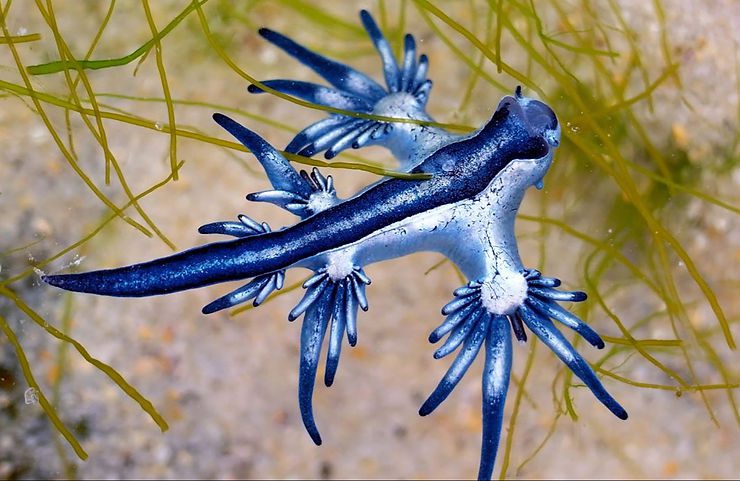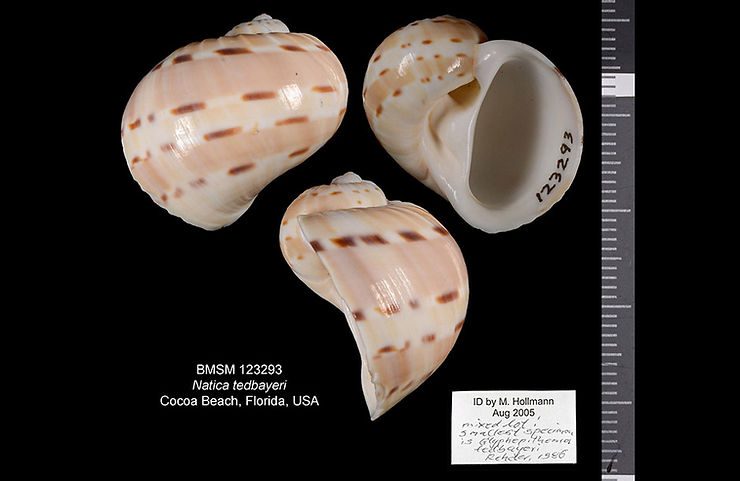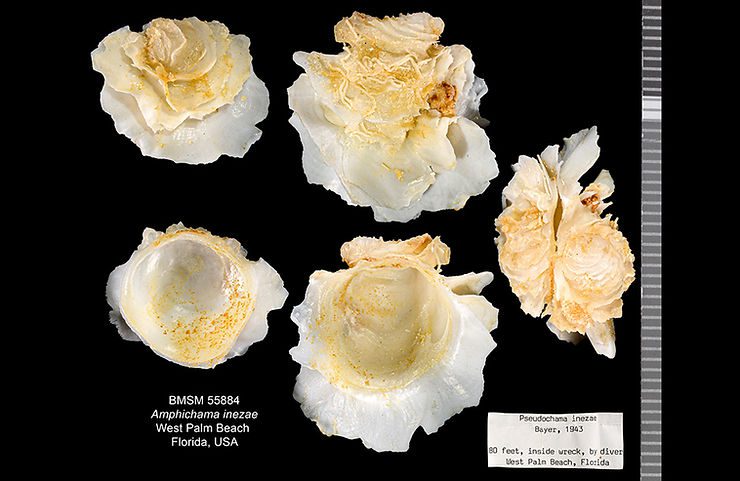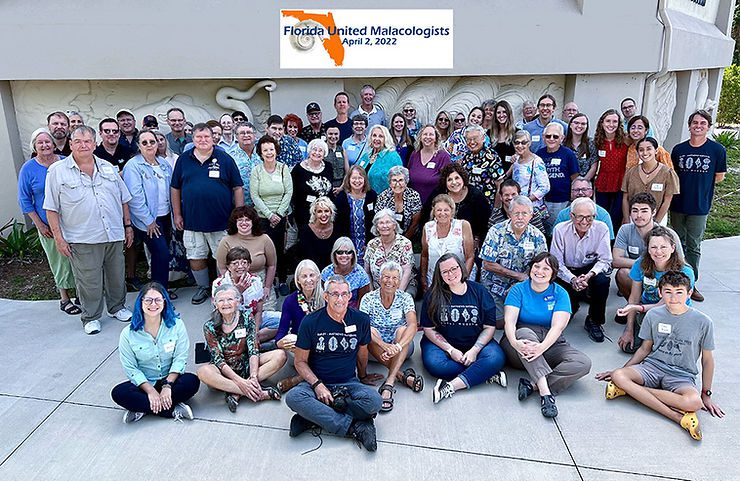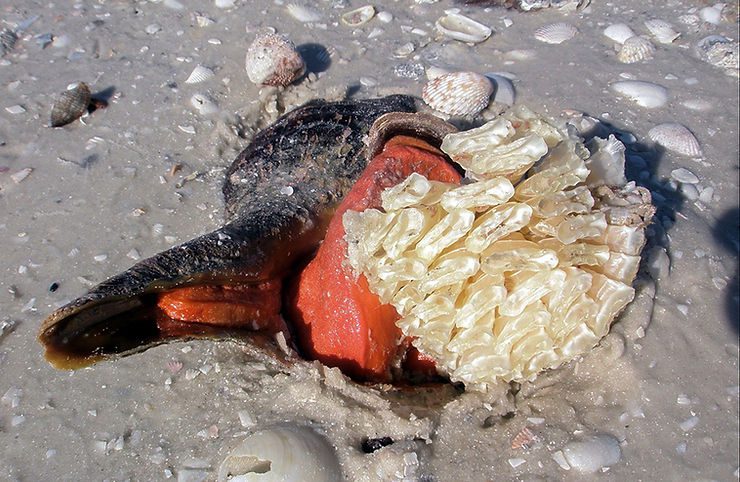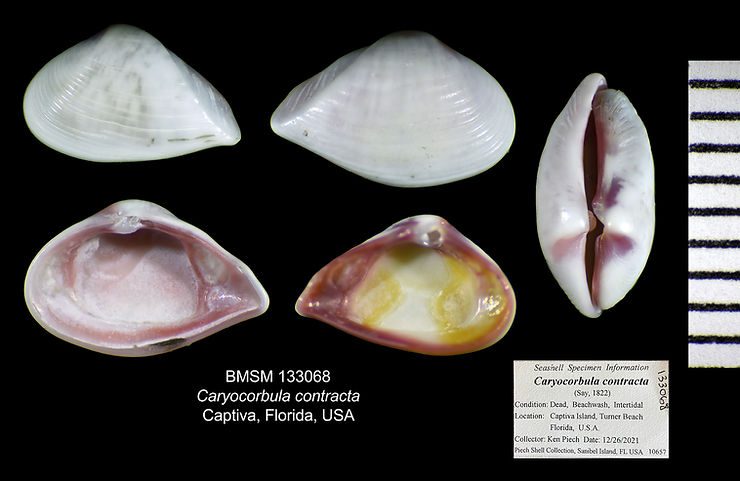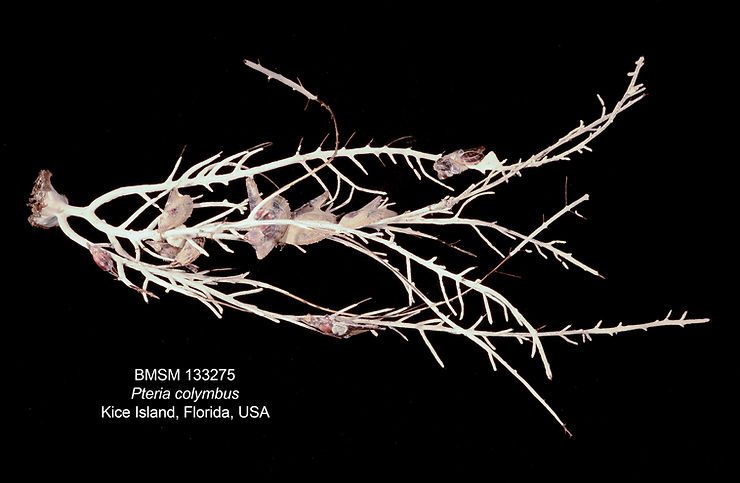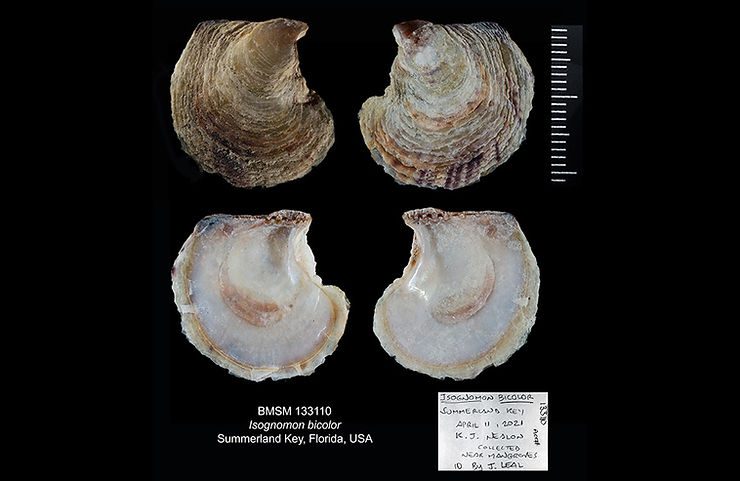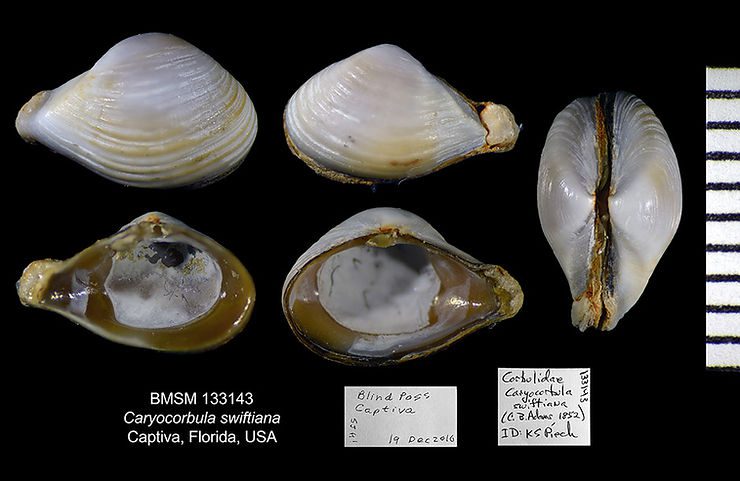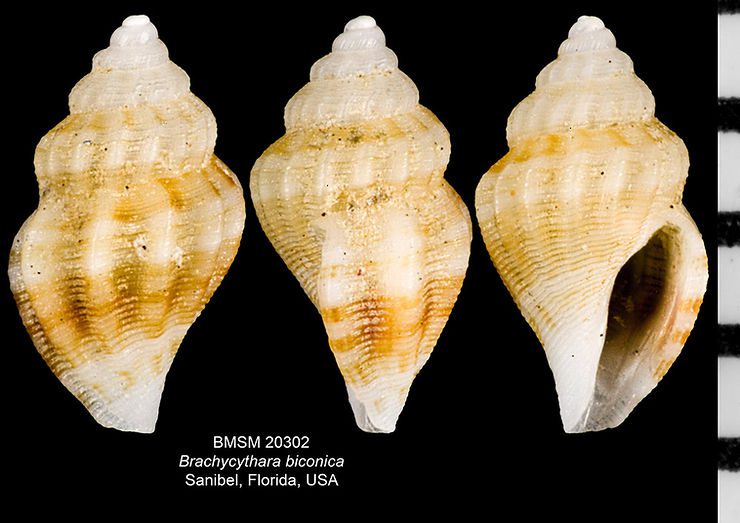
Shell of the Week: The Biconic Top Turrid
Brachycythara biconica (C.B. Adams, 1850) reaches about 6 mm (about 0.25 inch). As the name implies, the shell is shaped like a double cone. The shell is sculptured with about 13–17 axial (“vertical”) ribs per whorl, and is entirely covered with interrupted micro-grooves that impart a “frosted” appearance to the shell. The shell color is cream-white, with a broad light-brown band at mid-whorl and another, narrower, just below the suture. The shell in these images was collected in 1999 by Herb Ch
